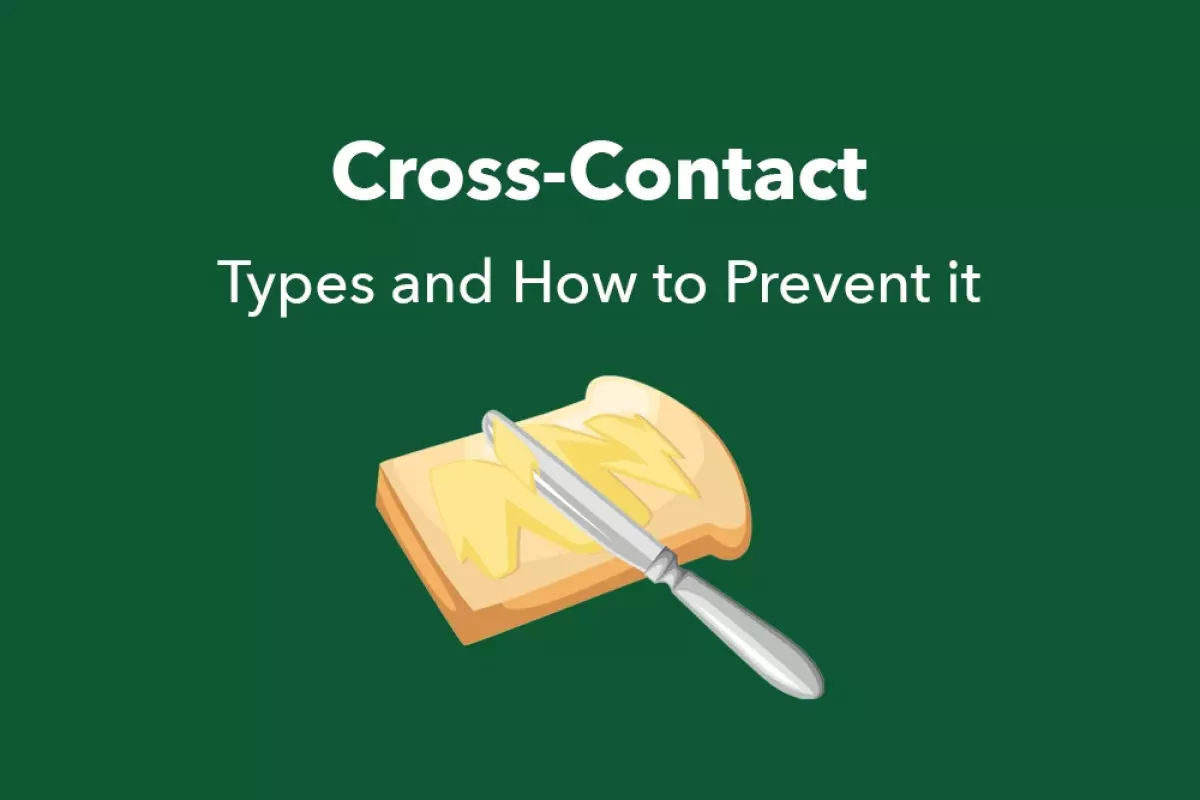Cross-contact is more than just a simple transfer of food allergens. It's a serious concern that can lead to severe allergic reactions in sensitive individuals. As a responsible food handler, it is crucial to understand how cross-contact occurs and take necessary precautions to prevent it. In this article, we will explore the different types of cross-contact and provide practical tips on how to avoid it.
 Image source: Cross-Contact: Types and How to Prevent It
Image source: Cross-Contact: Types and How to Prevent It
What is cross-contact?
Cross-contact refers to the unintentional transfer of allergens from one food to another, potentially contaminating an allergen-free meal. It is important to differentiate cross-contact from cross-contamination, which involves the transfer of disease-causing organisms rather than allergens.
Even tiny amounts of food allergens can trigger allergic reactions in susceptible individuals. Allergic reactions occur when the body's immune system reacts abnormally to an allergen. It is essential to note that there are nine major food allergens that account for 90% of all food allergies, including milk, eggs, fish, shellfish, tree nuts, peanuts, wheat, soybeans, and sesame.
Ways cross-contact can occur
Cross-contact can occur in three primary ways, each with its specific risks:
Food-to-food
Food-to-food cross-contact happens when an allergen-containing food comes into contact with an allergen-free food. For instance, if you add diced hard-boiled eggs to a salad, even if you remove them later, the salad is still unsafe for someone with an egg allergy. To prevent food-to-food cross-contact, it is crucial to keep allergen-free food and orders separate during preparation and service.
Equipment-to-food
Equipment-to-food cross-contact occurs when unsanitized equipment or food-contact surfaces are used in the preparation or serving of an allergen-free order. For example, using the same knife without washing and sanitizing it after buttering a slice of wheat bread to butter wheat-free bread can lead to cross-contact. Always ensure that you wash and sanitize equipment, countertops, cutting boards, and utensils to avoid cross-contact.
People-to-food
People-to-food cross-contact happens when food handlers contaminate an allergen-free order. Failing to wash hands or change gloves after handling allergens can result in cross-contact. For instance, assembling a wheat-bread sandwich followed by a wheat-free sandwich without changing gloves and washing hands can lead to contamination. Remember that gloves are not foolproof and can spread allergens like hands do. Proper hand hygiene and glove changing are essential to prevent cross-contact.
How to prevent cross-contact
To minimize the risk of cross-contact, here are some effective preventive measures for each type:
Food-to-food
- Keep allergen-free food and orders separate from others during preparation and service.
- Use dedicated utensils and equipment for allergen-free orders.
- Train staff on the importance of food separation to avoid cross-contact.
Equipment-to-food
- Wash and sanitize all food-contact surfaces, utensils, and equipment before using them for allergen-free orders.
- Maintain a regular cleaning schedule to prevent cross-contact.
- Educate staff on proper cleaning and sanitization procedures.
People-to-food
- Emphasize the importance of proper hand hygiene to all food handlers.
- Encourage frequent hand washing and glove changing.
- Provide training on allergen awareness and cross-contact prevention.
In conclusion
Cross-contact is a serious concern when it comes to food safety, especially for individuals with allergies. It is essential to understand the different types of cross-contact and take proactive measures to prevent it. By keeping allergen-free orders separate, practicing proper cleaning and sanitization, and maintaining good hand hygiene, you can ensure a safe dining experience for all customers. Remember, preventing cross-contact is not just a responsibility; it's a commitment to the well-being of your customers.

















